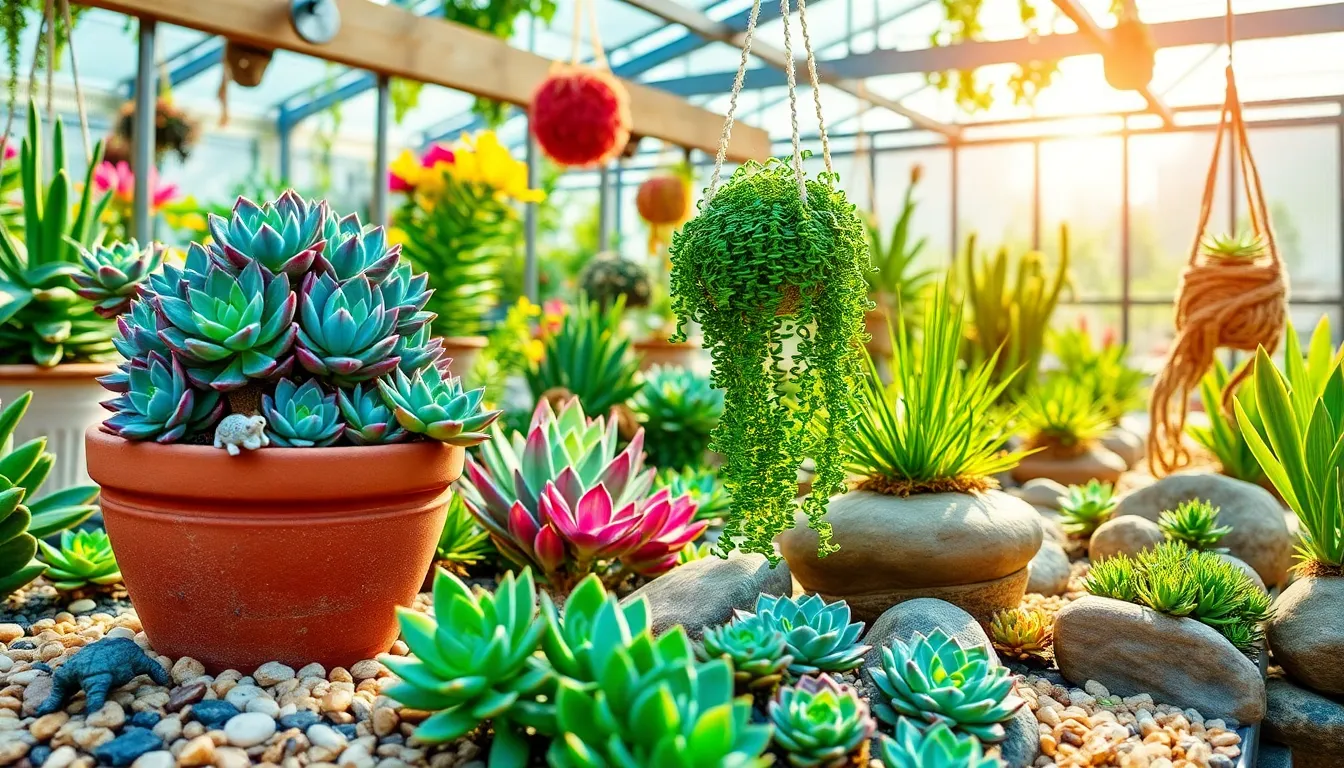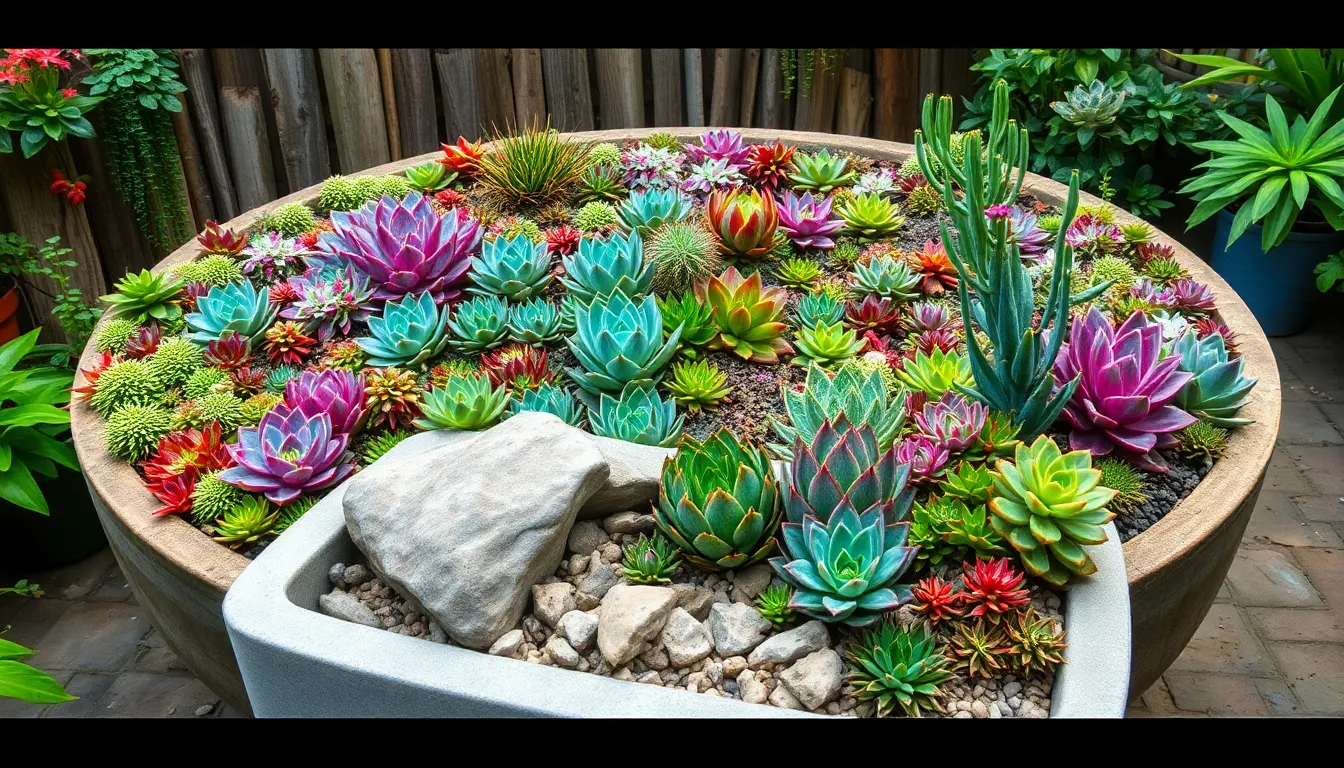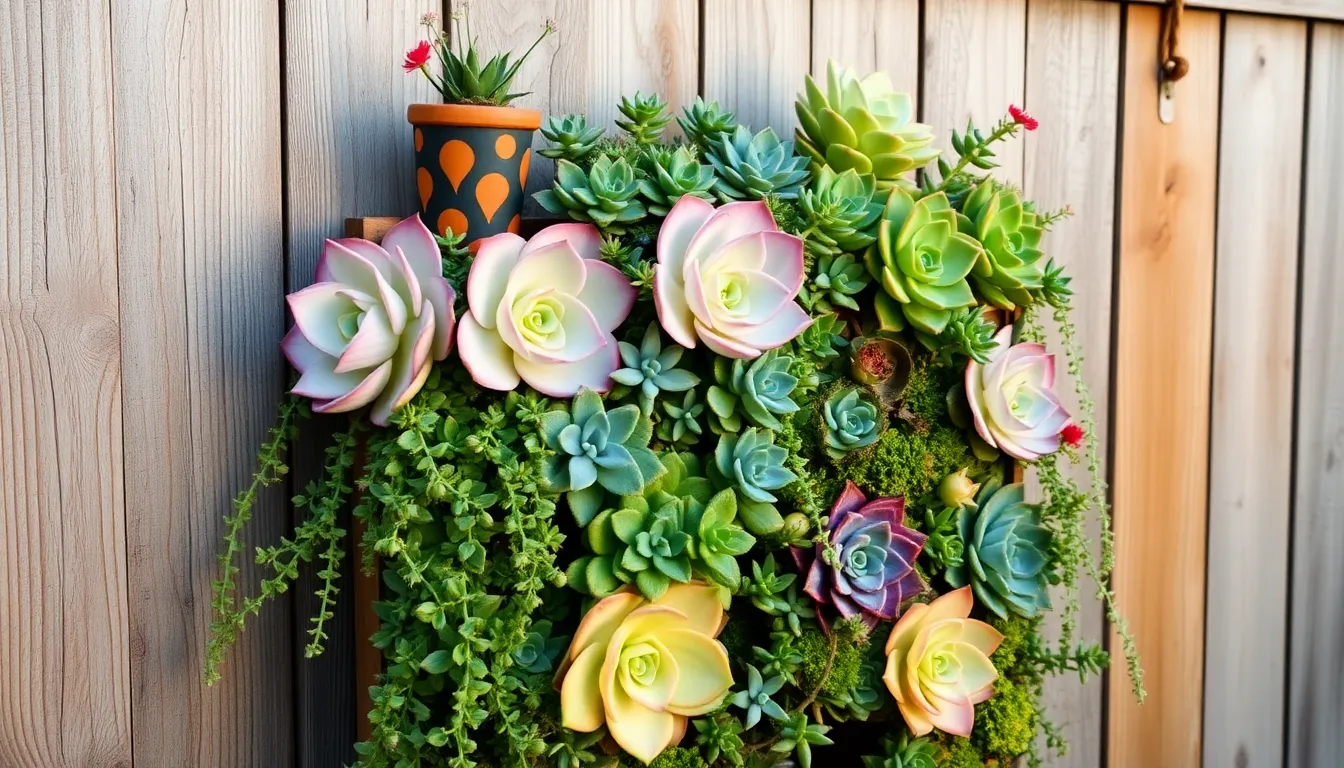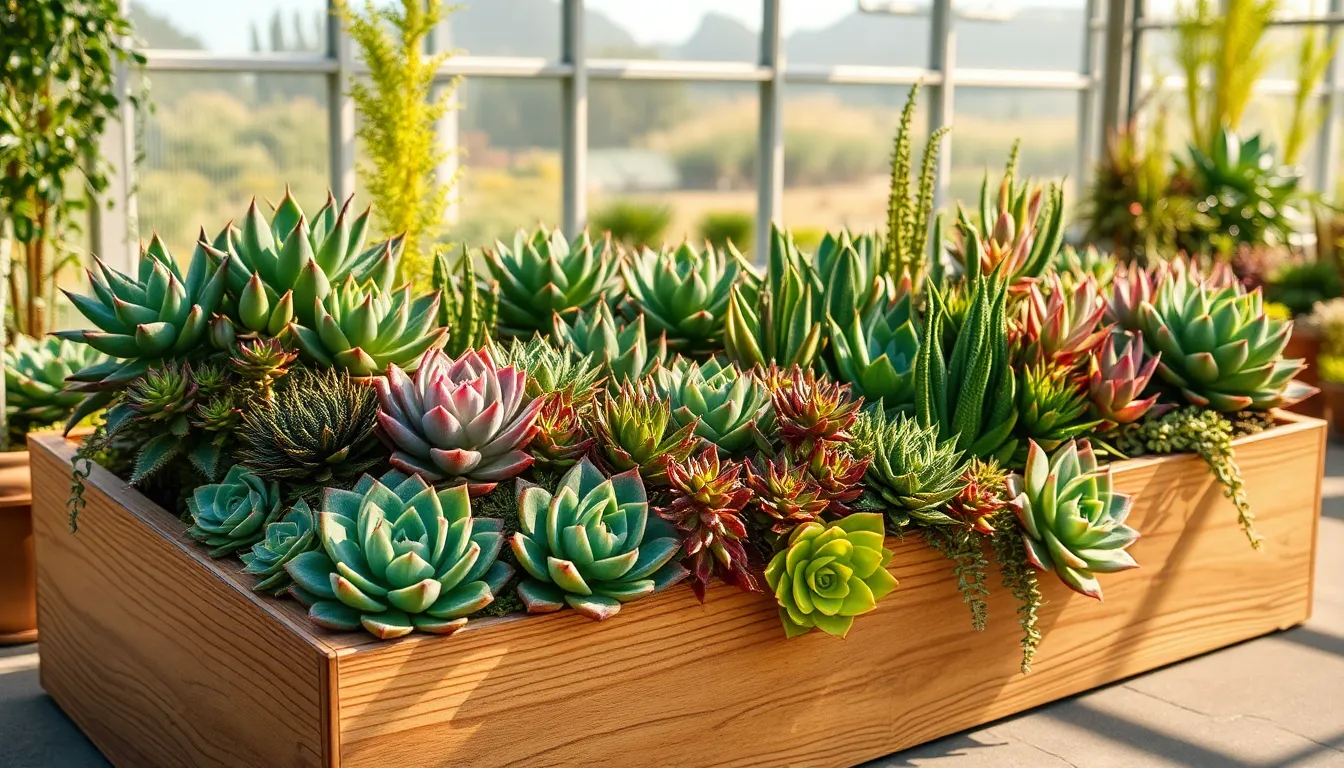Amidst the vibrant world of gardening, succulents have emerged as the darlings of plant enthusiasts, offering a delightful palette of colors and shapes that can transform any space into a living masterpiece. Whether you’re taking your first steps into the green-thumb world or you’ve been nurturing plants for years, crafting a succulent garden can provide both a creative outlet and a serene retreat right at your doorstep.
For beginners, succulents offer a forgiving nature that eases the journey into gardening, demanding minimal care while rewarding you with striking beauty. Experienced gardeners, on the other hand, can explore the endless design possibilities these resilient plants offer, combining textures and hues to create stunning displays that captivate the eye and the imagination.
In this article, we’ll explore nine vibrant succulent garden designs that cater to every skill level, ensuring that your landscape becomes a personal expression of color and form. You’ll discover practical tips on plant selection, arrangement, and maintenance, empowering you to cultivate a space that not only thrives but also enchants.
Choosing Vibrant Succulent Varieties
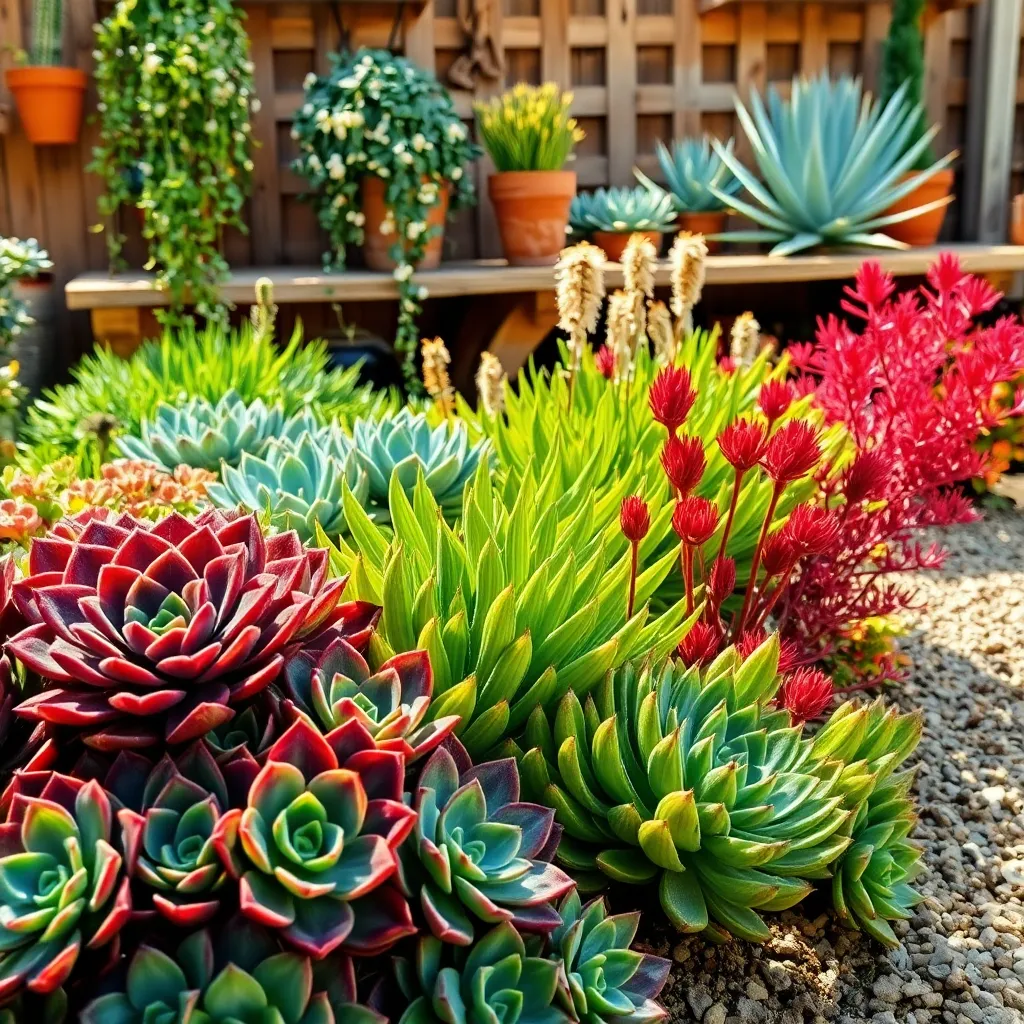
Succulents are a fantastic choice for adding vibrant color to your garden, and selecting the right varieties can make your design truly pop. When choosing succulents, consider factors like sunlight requirements, growth habits, and color variations to ensure a harmonious and thriving garden.
Start with varieties like Echeveria ‘Afterglow’, known for its stunning pink and lavender hues that can act as a focal point. Pair these with the bold greens and reds of Sedum ‘Dragon’s Blood’ to create a striking contrast that enhances the overall vibrancy of your succulent garden.
To ensure your succulents thrive, use a well-draining soil mix composed of parts like sand, perlite, and potting soil. Watering is key; let the soil dry out completely between waterings to prevent root rot, a common issue with succulents.
For more advanced gardeners, try experimenting with grafting cactus varieties, a technique that can produce unique and colorful combinations. This requires some skill, but with patience and practice, you can create a one-of-a-kind succulent display that showcases your gardening prowess.
Creating Eye-Catching Color Combinations
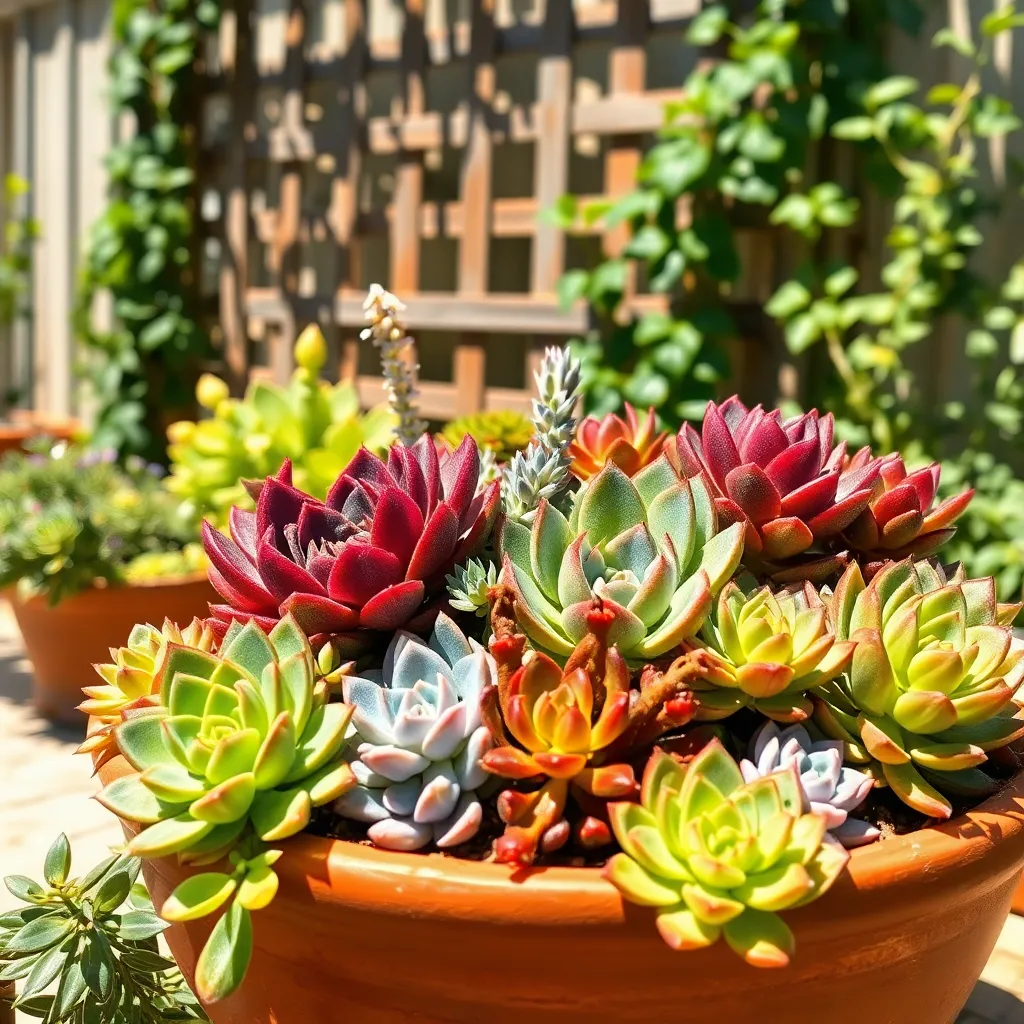
Creating eye-catching color combinations in your succulent garden requires thoughtful planning and a bit of creativity. Start by selecting succulents with contrasting colors, such as pairing bright greens with deep purples or vibrant reds with cool blues, to make each plant stand out.
Understanding the growth habits of your chosen succulents is essential for maintaining visual balance. Place larger, more dominant plants in the background while using smaller, more delicate succulents in the foreground to create depth and interest.
For beginners, it’s helpful to start with a few easy-to-grow varieties like jade plants, echeverias, and sedums. These succulents not only offer a range of colors but also thrive in well-draining soil and require minimal watering, making them perfect for low-maintenance gardens.
Advanced gardeners can experiment with more intricate designs by incorporating succulents with unique textures and leaf shapes. Use a variety of pot sizes and styles to elevate certain plants, creating a dynamic and layered visual effect.
Consider the seasonal changes in your garden and choose succulents that maintain their color year-round. Ensure your garden receives adequate sunlight, as many succulents need at least six hours of bright, indirect light daily to maintain their vibrant hues.
Designing with Contrasting Textures
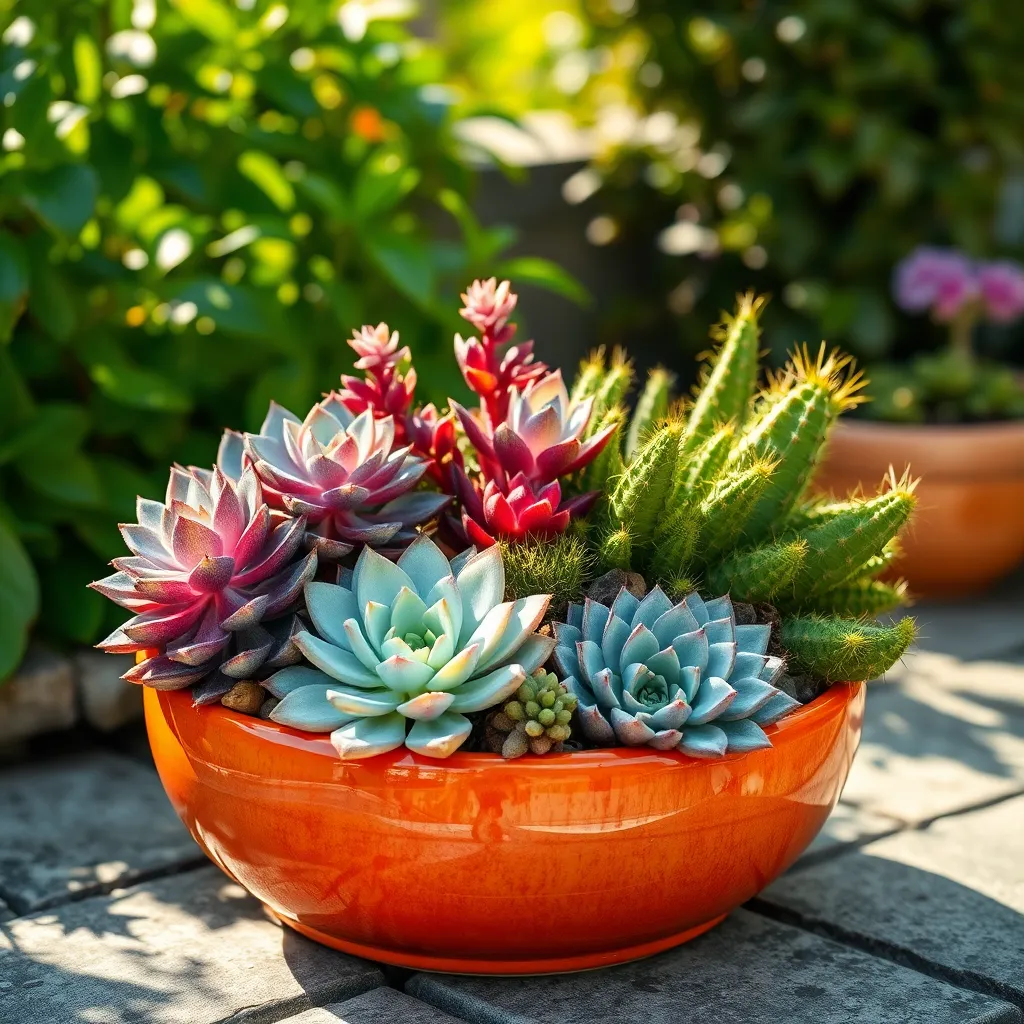
Incorporating contrasting textures in your succulent garden can create a stunning visual impact. To effectively achieve this, combine succulents with different leaf textures, such as the smooth, rosette-shaped leaves of Echeveria with the spiky, architectural forms of Agave.
Consider pairing the fuzzy leaves of Kalanchoe tomentosa, known as Panda Plant, with the glossy surfaces of Haworthia species. This contrast not only enhances the visual appeal but also provides a tactile experience for garden visitors. Ensure that both plants receive bright, indirect light and well-draining soil to thrive.
When designing with textures, it’s important to pay attention to the scale of the plants. Small-leaved succulents like Crassula perforata, or String of Buttons, can be placed next to broad-leaved varieties such as Aeonium to draw the eye and add depth. Both plants are relatively low-maintenance, requiring watering once the soil is completely dry.
For a more advanced design, experiment with vertical planting using contrasting textures. Combine trailing varieties like Senecio rowleyanus, or String of Pearls, with upright species such as Sansevieria to create a dynamic cascading effect. Regularly check for pests and rotate plants for even light exposure to maintain their health and vitality.
Incorporating Decorative Planters
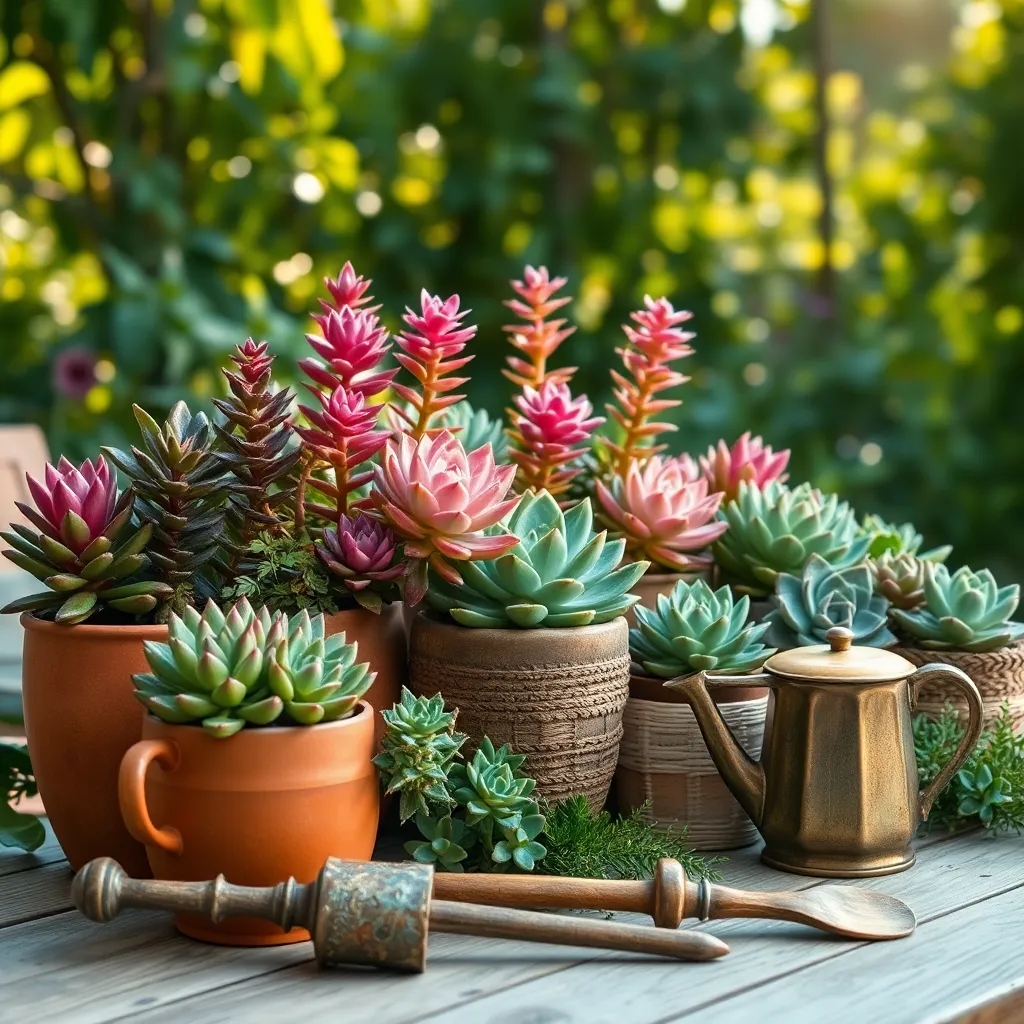
Decorative planters offer a wonderful opportunity to enhance the visual appeal of your colorful succulent garden. Choose planters in various shapes and sizes to create dynamic arrangements that draw the eye.
When selecting planters, consider materials that complement your garden’s aesthetic, such as ceramic, terracotta, or metal. Ensure the planter has drainage holes to prevent water from accumulating and causing root rot in your succulents.
Experiment with using planters as focal points by placing them at varying heights. You can achieve this by using plant stands or stacking bricks, which adds a layered effect to your display.
For beginners, start with a simple arrangement of different succulents in a single, large planter. Advanced gardeners might try combining multiple planters in a group, using contrasting colors and textures to create visual interest.
Remember to use a well-draining soil mix, specifically formulated for succulents, in your planters. Water the succulents only when the soil is completely dry, typically every two to three weeks, depending on your climate and the size of the planter.
Arranging for Visual Interest
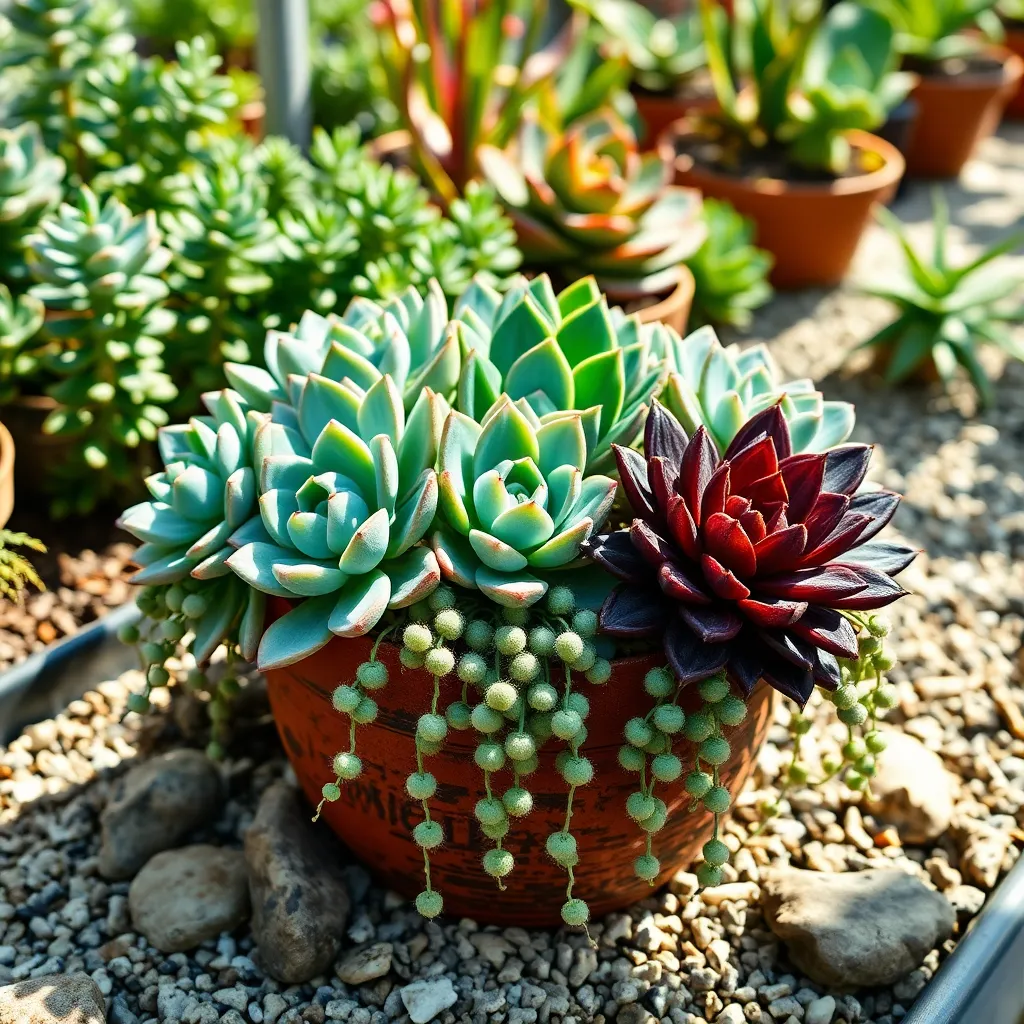
To create visual interest in your succulent garden, consider the heights and textures of your plants. Varying plant heights adds depth, while mixing textures creates a layered look that’s pleasing to the eye.
Start by placing taller succulents, like the Aloe Vera or Agave, towards the back of your arrangement. These plants not only serve as a backdrop but also add structure and dimension to your garden.
In the middle, incorporate medium-height succulents such as Echeveria or Crassula. These plants have rosette shapes that can fill gaps and add lushness, making your garden appear more vibrant.
Finally, position smaller, trailing succulents like Sedum or Senecio along the edges. Their cascading growth can soften the borders of your garden and create a seamless transition from one plant to the next.
- Use a well-draining soil mix, such as a cactus mix, to prevent root rot.
- Ensure your arrangement receives ample sunlight, as most succulents thrive in bright, indirect light.
- Water sparingly, letting the soil dry out completely between waterings to mimic their natural arid habitats.
For an advanced touch, consider adding a focal point, like a decorative rock or a strikingly colored succulent. This will draw the eye and provide a central theme around which your other plants can be arranged.
Maximizing Small Space Designs
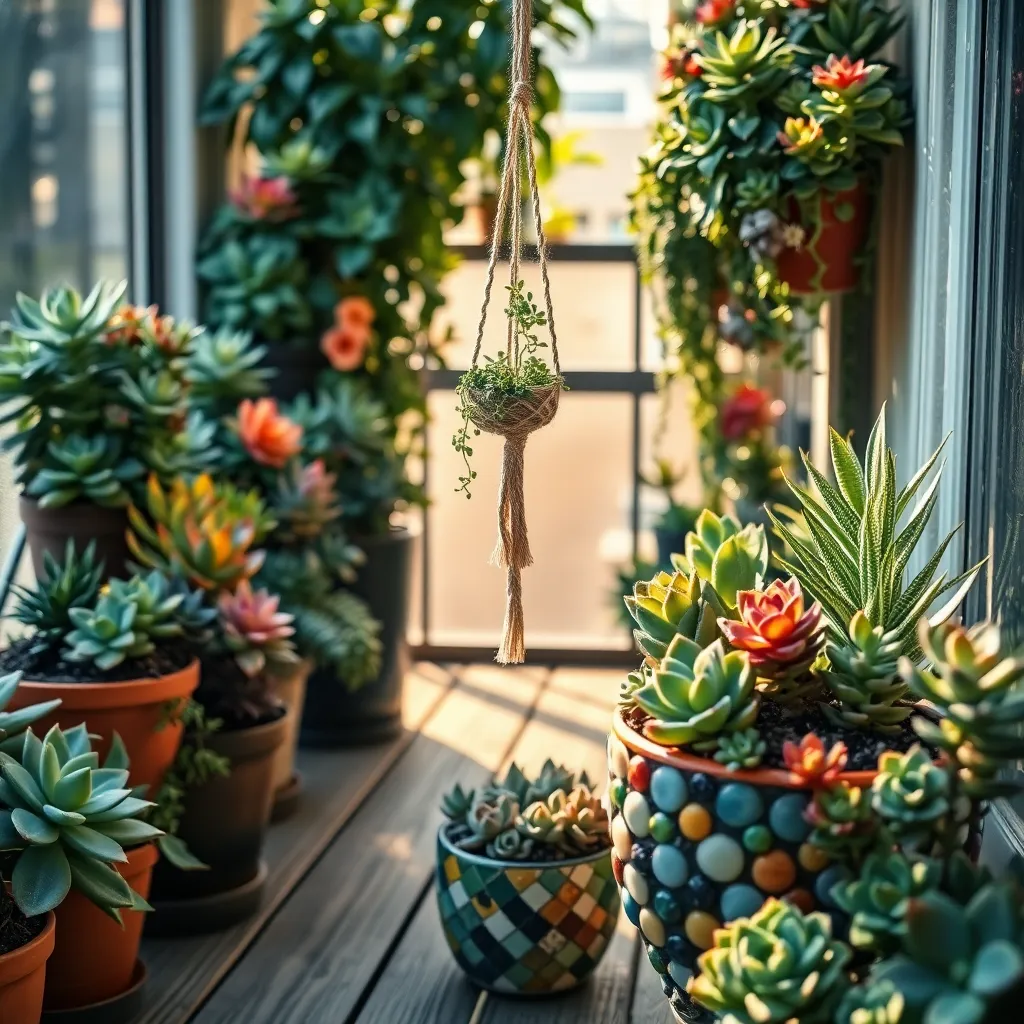
In small spaces, vertical gardening can be a game-changer, allowing you to maximize your planting area without taking up extra ground space. Utilize shelves, hanging pots, or wall-mounted planters to create vibrant layers of succulents that catch the eye and make your garden feel lush and expansive.
Consider choosing smaller succulent varieties like Haworthia or Echeveria, which are perfect for compact spaces and require minimal maintenance. These plants thrive in well-draining soil, so opt for a cactus mix or a blend of potting soil and sand to ensure healthy root growth.
When it comes to watering, succulents appreciate a “soak and dry” approach—water thoroughly and allow the soil to dry out completely before the next watering. This method prevents overwatering, which is crucial in small, enclosed spaces where drainage might be less effective.
For more advanced gardeners, consider incorporating a living wall filled with succulents to bring a stunning visual element to your space. A living wall requires a bit more planning but can transform a bland corner into an artistic, living tapestry that changes with the seasons.
Crafting Vertical Succulent Gardens
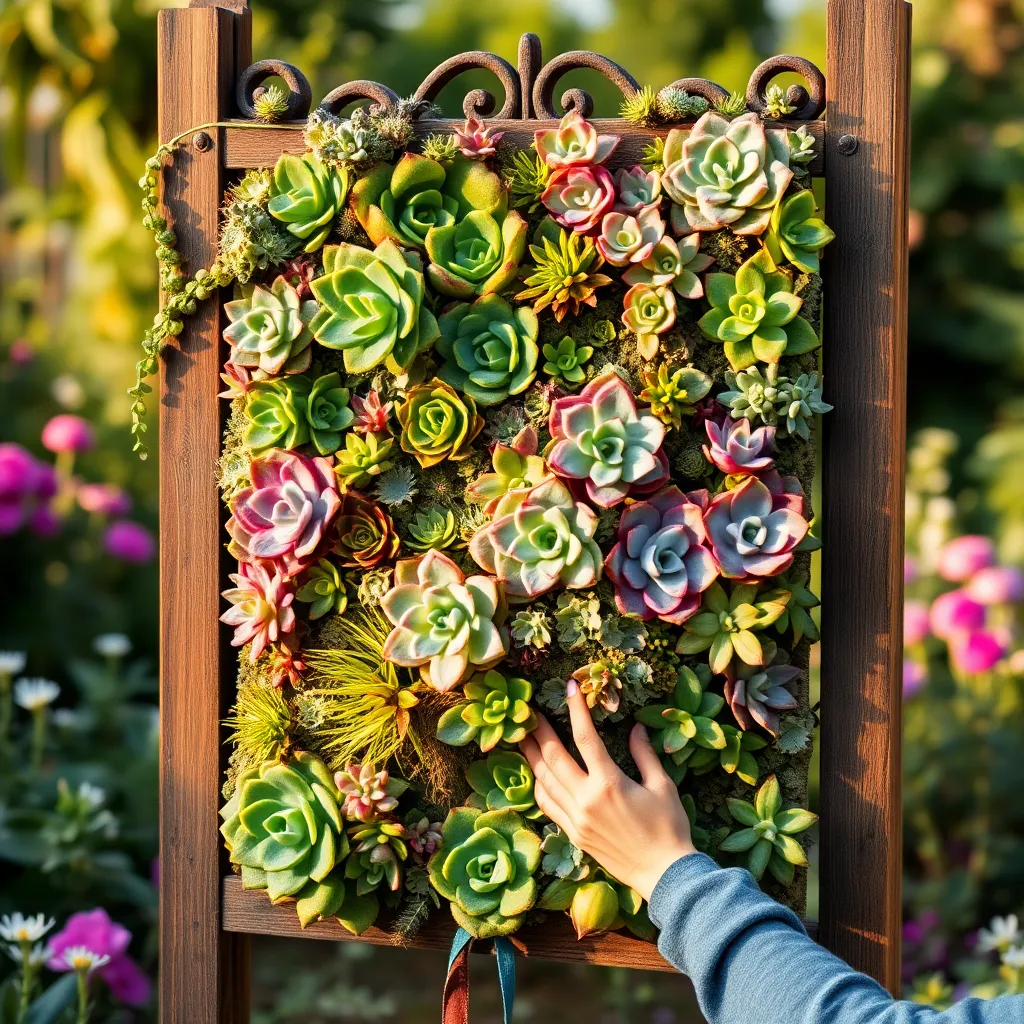
Vertical succulent gardens are an excellent way to add a splash of color and style to any small space. They not only maximize space but also bring a unique aesthetic to walls, fences, or even indoor areas.
To start crafting your vertical garden, choose a sturdy frame or structure that can support the weight of the soil and plants. Opt for a shallow container with drainage holes to prevent waterlogging, as succulents prefer well-drained environments.
Fill the container with a specialized succulent potting mix, which retains just the right amount of moisture. A good mix typically contains sand, pumice, or perlite to ensure effective drainage and aeration.
When selecting succulents, consider varieties that thrive in your local climate and have similar water and light requirements. Some popular choices include echeverias, sedums, and jade plants, which are known for their vibrant colors and easy maintenance.
Position your vertical garden in a spot with bright, indirect sunlight for optimal growth. Succulents generally need at least six hours of sunlight per day, but be cautious of intense afternoon sun which can scorch the leaves.
Water your vertical succulent garden sparingly, allowing the soil to dry out completely between waterings. A good rule of thumb is to water every two to three weeks, though this may vary depending on your environment and the specific succulents used.
Advanced tip: Consider incorporating a drip irrigation system for consistent moisture, especially in warmer climates. This system helps maintain the right balance, avoiding both overwatering and drying out.
Using Rocks for Natural Accents
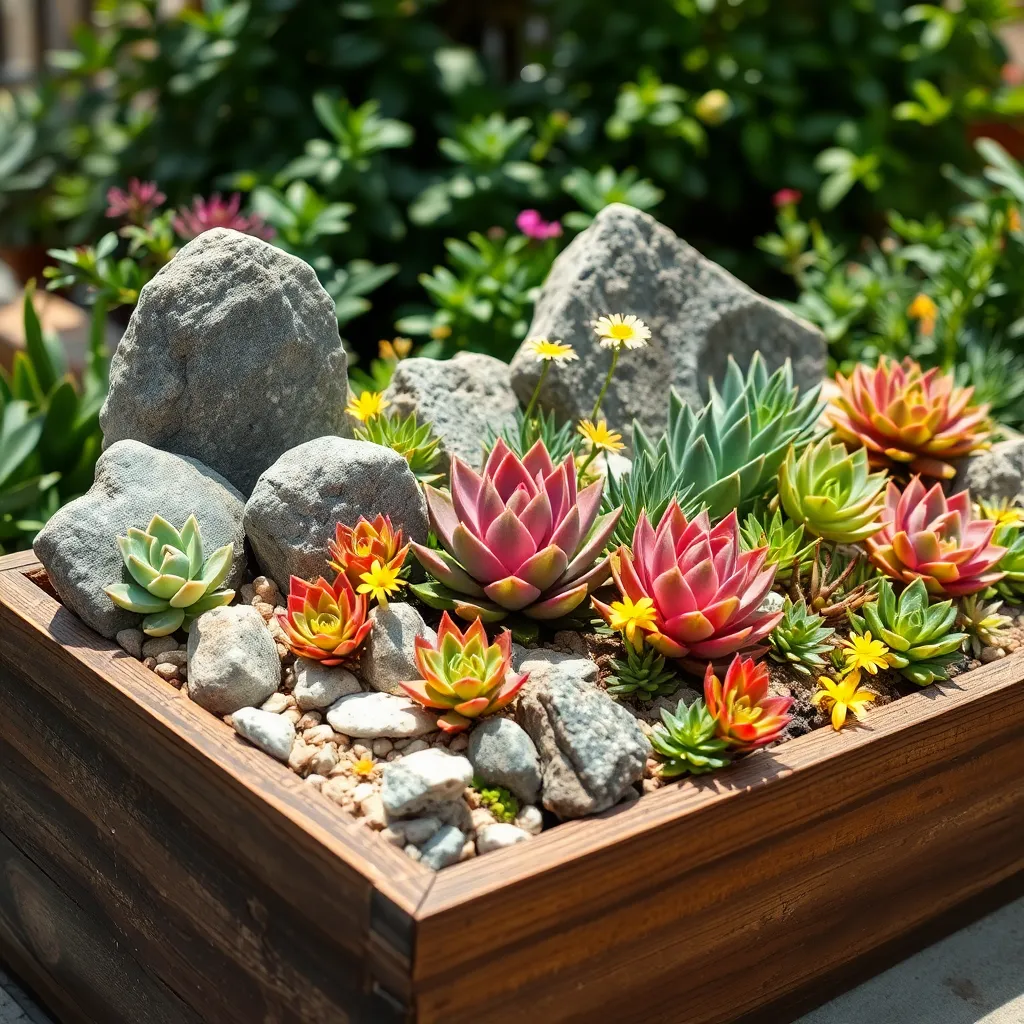
Incorporating rocks into your succulent garden can add a natural charm that’s both aesthetic and functional. By strategically placing rocks, you can create visual interest and define different sections of your garden, making it easier to manage and maintain.
Rocks offer more than just beauty; they can help regulate soil temperature and moisture levels, which is crucial for succulents. Succulents thrive in environments where the soil can dry out between waterings, and rocks can assist in achieving that balance by providing excellent drainage.
For beginners, start by selecting a variety of rock sizes and textures to complement your succulents. Position larger rocks as focal points and scatter smaller stones around them to create a cohesive look that mimics a natural landscape.
Consider using rocks in different colors to enhance the visual appeal of your garden. Shades of gray, brown, or even reddish tones can highlight the unique colors of your succulents, creating a vibrant and dynamic display.
Advanced gardeners might experiment with creating rock mounds or terraces, simulating the succulents’ native habitats. Such structures can not only improve drainage but also add height and interest to your garden design.
When placing rocks, ensure they are stable and won’t shift over time, which can disturb your plants. Use smaller stones or gravel to fill gaps and prevent soil erosion, ensuring your garden remains neat and tidy.
Maintaining Colorful Succulent Displays
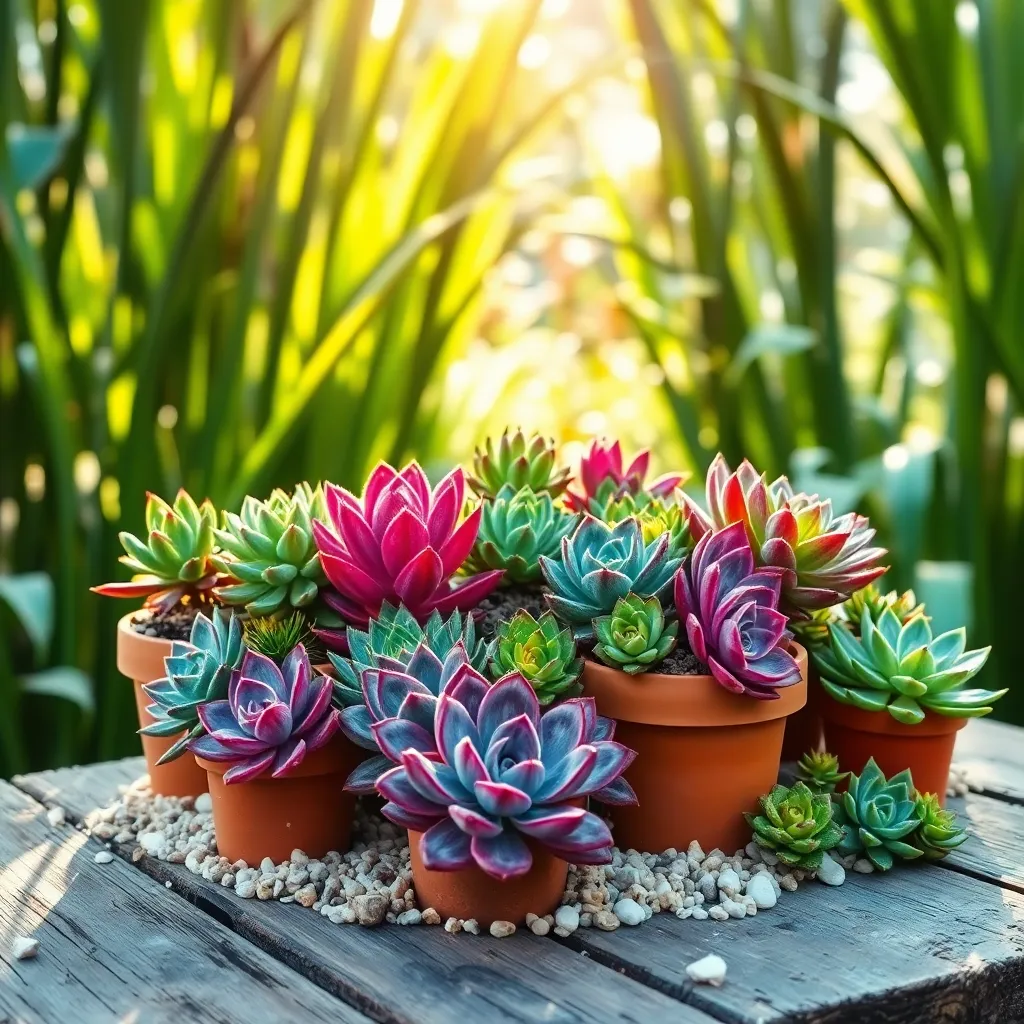
To maintain colorful succulent displays, it’s crucial to understand that succulents thrive in well-draining soil. A cactus mix or a blend of potting soil with sand or perlite works exceptionally well, ensuring excess water doesn’t damage the roots.
Watering is another key component in preserving the vibrant hues of your succulents. Water deeply but infrequently, allowing the soil to dry out completely between waterings to mimic their natural desert environment.
In addition to proper watering, provide your succulents with ample sunlight to enhance their colors. Most succulents require about six hours of bright, indirect sunlight each day, although some can adapt to more direct light if gradually introduced.
Fertilizing succulents can give them a boost, especially during the growing season. Use a diluted, balanced fertilizer once in spring and again in summer to promote healthy growth and color intensity without overwhelming the plants.
For more advanced gardeners, experimenting with stress techniques can lead to stunning colors. Techniques such as slightly limiting water or gradually increasing sun exposure can enhance the reds, purples, and oranges often hidden in succulents.
Conclusion: Growing Success with These Plants
As we conclude our exploration of ‘9 Colorful Succulent Garden Designs,’ we’ve discovered how each design parallels key relationship concepts: nurturing growth, embracing diversity, fostering resilience, creating harmony, celebrating individuality, promoting balance, encouraging adaptability, cultivating patience, and cherishing beauty in simplicity. These principles not only enhance our gardens but also flourish in our relationships, offering a vibrant foundation for connection and understanding.
Now, it’s time to take action. Choose one concept that resonates with you and implement it in your relationship today. Whether it’s nurturing growth by giving your partner space to thrive or fostering resilience by weathering challenges together, each step counts.
Don’t let these insights slip away—bookmark this article for ongoing inspiration and a reminder of the colorful possibilities in your relationship.
Remember, relationships are living entities that blossom with care and attention. By applying these concepts, you’re not just tending to your partnership; you’re sowing the seeds for lasting success and happiness. Embrace the journey, and watch your relationship garden grow into something truly magnificent.

